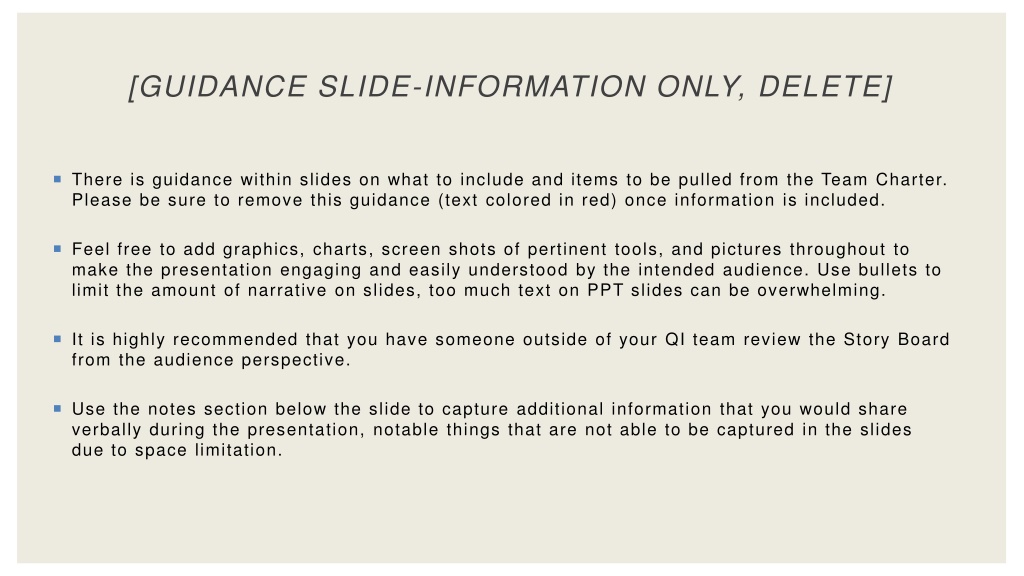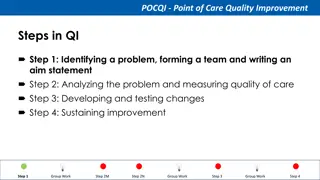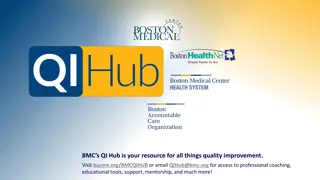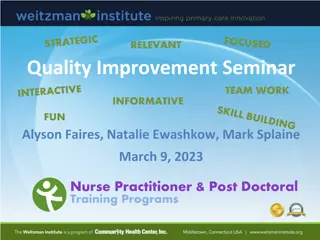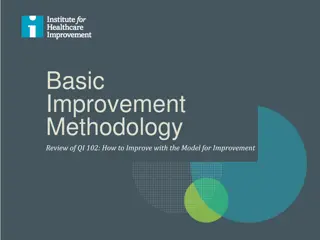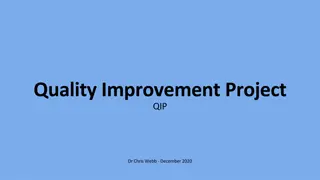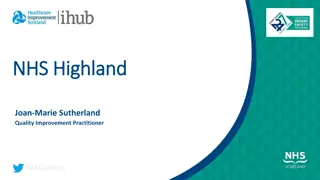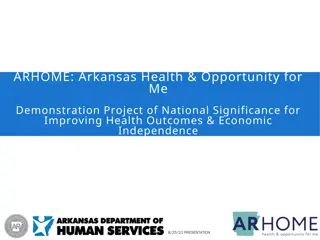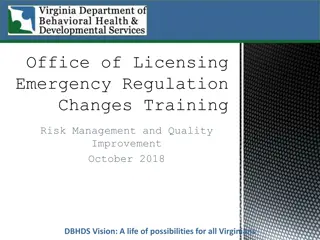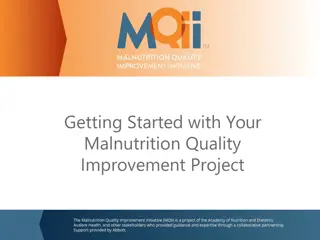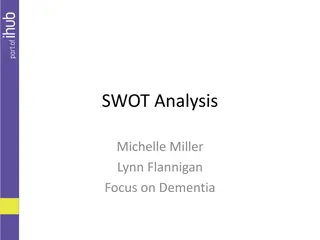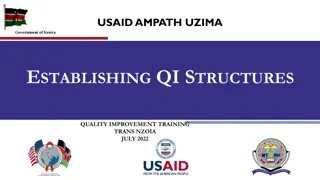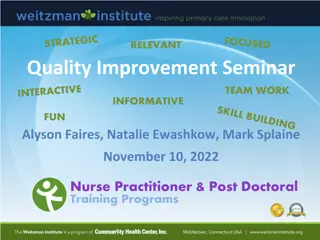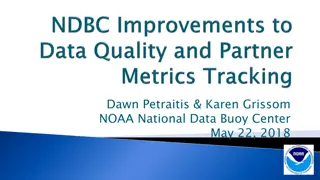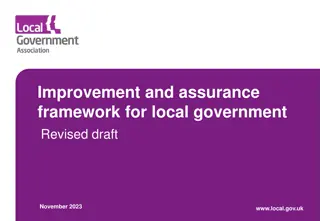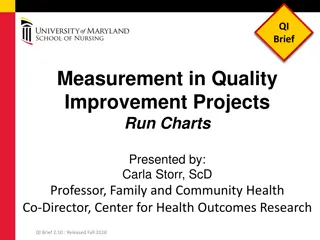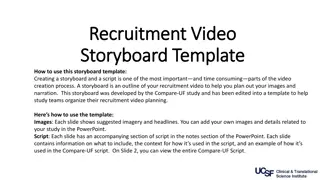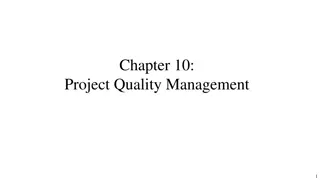Quality Improvement Project Storyboard
This storyboard presents the progress and essential components of a Quality Improvement (QI) project. It covers assembling the team, examining the current approach, identifying opportunities for improvement, developing potential solutions, and detailing the plan stage which includes problem and aim statements, process mapping, and key lessons learned.
Download Presentation

Please find below an Image/Link to download the presentation.
The content on the website is provided AS IS for your information and personal use only. It may not be sold, licensed, or shared on other websites without obtaining consent from the author. Download presentation by click this link. If you encounter any issues during the download, it is possible that the publisher has removed the file from their server.
E N D
Presentation Transcript
[GUIDANCE SLIDE-INFORMATION ONLY, DELETE] There is guidance within slides on what to include and items to be pulled from the Team Charter. Please be sure to remove this guidance (text colored in red) once information is included. Feel free to add graphics, charts, screen shots of pertinent tools, and pictures throughout to make the presentation engaging and easily understood by the intended audience. Use bullets to limit the amount of narrative on slides, too much text on PPT slides can be overwhelming. It is highly recommended that you have someone outside of your QI team review the Story Board from the audience perspective. Use the notes section below the slide to capture additional information that you would share verbally during the presentation, notable things that are not able to be captured in the slides due to space limitation.
QI PROJECT TITLE [Insert Program/ Organization Logo or Graphic] TEAM NAME LOCAL IMPLEMENTING AGENCY FY16 STORYBOARD
OUR QI TEAM [Insert team member names, agency position they are representing on the team, and role on QI team (pull from Team Charter) a table has been included below for you to display this information] Team Member Name Agency Position Role on CQI Team [This is a great spot to include a picture of your team!]
Getting Started Assemble the Team PLAN STAGE Examine the Current Approach IDENTIFY AN OPPORTUNITY AND PLAN FOR IMPROVEMENT Identify Potential Solutions Develop an Improvement Theory
PLAN STAGE IDENTIFY AN OPPORTUNITY AND PLAN FOR IMPROVEMENT Problem Statement [Insert Problem Statement from your Team Charter] Aim Statement [Insert final Aim Statement from your Team Charter]
PLAN STAGE IDENTIFY AN OPPORTUNITY AND PLAN FOR IMPROVEMENT Examine the Current Approach: Process Map [Insert the process map the team developed of the current process (prior to improvement) or a description (it s a good idea to use bullets to break up the text) of the current process selected for improvement.]
PLAN STAGE IDENTIFY AN OPPORTUNITY AND PLAN FOR IMPROVEMENT Examine the Current Approach: Key Lessons from Process Map [Examine Current Approach: Look to the process improvement area on the Team Charter for key information about the process and gaps noted by the team in review of the process map. What did the team learn from your process map that informed the PDSA cycle undertaken? You can summarize in bullets.]
PLAN STAGE IDENTIFY AN OPPORTUNITY AND PLAN FOR IMPROVEMENT Examine the Current Approach: Baseline Data [Include baseline data that supports the problem identified, the measure in your Aim Statement, and the process being targeted for improvement. This is a good spot to insert a chart (pie, bar, run, etc.) with your data displayed visually. Keep in mind, the team will want to display comparison data in the Study section of the story board.]
PLAN STAGE IDENTIFY AN OPPORTUNITY AND PLAN FOR IMPROVEMENT Examine the Current Approach: Determine Root Cause [Insert the QI tool (Fishbone Diagram, Tree Diagram, Force Field Analysis, Interrelationship Diagraph etc.) used to examine root causes.]
PLAN STAGE IDENTIFY AN OPPORTUNITY AND PLAN FOR IMPROVEMENT Examine the Current Approach: Key Lessons from Root Cause Analysis [Determining Root Cause: What did the team learn from the QI tool used to examine root cause? How did the team decide what root cause to tackle? You can summarize in bullets.]
PLAN STAGE IDENTIFY AN OPPORTUNITY AND PLAN FOR IMPROVEMENT Identify Potential Solutions [Insert Affinity Diagram or other QI tool used to brainstorm potential solutions to the root cause.]
PLAN STAGE IDENTIFY AN OPPORTUNITY AND PLAN FOR IMPROVEMENT Identify Potential Solutions: Key Lessons from Affinity Diagram [What did the team learn from identifying potential solutions based on the root cause? Were model or best practices reviewed to identify potential changes that could be tested? What solution did the team pick and why? You can summarize in bullets.]
PLAN STAGE IDENTIFY AN OPPORTUNITY AND PLAN FOR IMPROVEMENT Improvement Theory (If/Then Statement) [Insert Improvement Theory/Theories from your Team Charter]
DO STAGE TEST THE THEORY FOR IMPROVEMENT Test the Theory for Improvement
DO STAGE TEST THE THEORY FOR IMPROVEMENT Test the Theory [Note the major action steps and dates your team took to test the improvement theory (complete the Do stage). This includes tasks that were completed in order to prepare for the test as well as testing the theory.] Major Action Steps Date Completed
DO STAGE TEST THE THEORY FOR IMPROVEMENT [Use this space to insert images of tools developed for your test (i.e. survey, tracking document, checklist, etc.)]
STUDY STAGE USE DATA TO STUDY THE RESULTS Study the Results OF THE TEST
STUDY STAGE USE DATA TO STUDY THE RESULTS How did the test go? [Was the test successful? Did the results match the team s theory? Was there an improvement? You can summarize in bullets.] [Insert a chart or table with your data (be sure to include your baseline and comparison data). Feel free to include the data chart(s) on a separate slide, if needed.]
STUDY STAGE USE DATA TO STUDY THE RESULTS What did the team learn? [Note what the team learned through the test here. Did the team experience any unintended side effects or events that impacted results? Did the team need to test the improvement under other conditions? Were there any aha moments during the test? You can summarize in bullets.]
ACT STAGE Standardize the Improvement Theory or Develop a New Theory ACT ON THE RESULTS AND ESTABLISH FUTURE PLANS Establish Future Plans
ACT STAGE ACT ON THE RESULTS AND ESTABLISH FUTURE PLANS Based on the results, the team decided to: Adapt, Adopt, or Abandon the improvement theory [Why?] The team celebrated the successes of this cycle by: [Note what the team did to celebrate feel free to include a picture of your celebration.] Plans for the next PDSA cycle: [What are the team s plans for your next PDSA cycle?]
